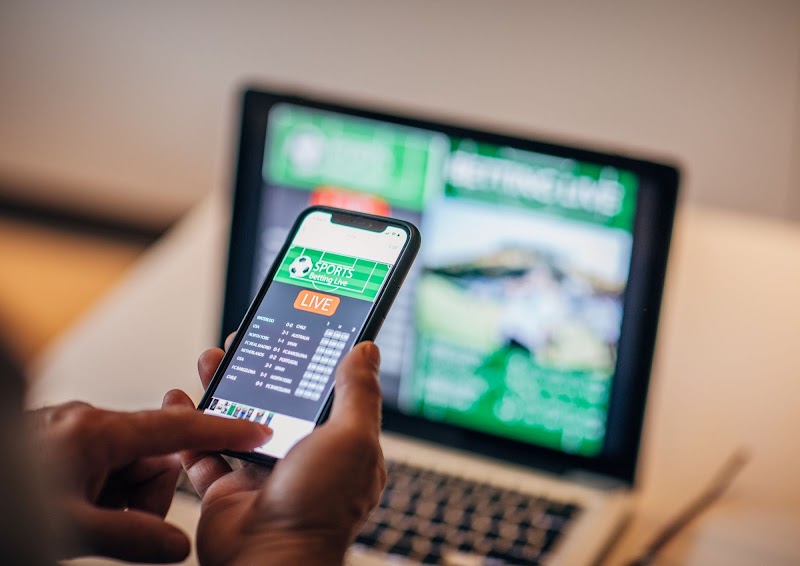In today's digital age, having a website optimised for mobile is essential for your success as a business. Consumers' preferred way to browse the internet is through their mobile devices. This implies that if your website isn’t optimised for mobile, you are losing a huge opportunity to reach your target audience and falling behind the competition.
Google wants to assure that users have the best user experience possible when using their search engine. Because of this, they have pointed out that they rank websites that are mobile-friendly in their search results higher than those that are not. If your website isn’t mobile-friendly at this time, now is the time to start implementing changes so that you can remain relevant and stay ahead of your competition.
Fortunately, there are a few simple steps you can take to ensure that your website is headed towards a mobile-friendly structure. Below we have listed five actions that can directly improve your mobile optimisation. By following these five tips, you can ensure that your website looks and functions perfectly across all devices.
Responsive Design
If you want to attract and convert mobile users, it's essential that your website is optimised for all mobile devices. One way to ensure this is by implementing a responsive web design. Having a responsive web design gives your website the ability to adjust its layout and content to fit whatever screen size it is being viewed on. This not only improves your search engine rankings but having a responsive design improves your user experience.
By boosting your web traffic and enhancing your user experience you can begin to convert more users and increase ROI. If you are not exactly sure if your website meets the requirements for a responsive design, get in touch with an SEO agency. An SEO Agency can help you identify areas of improvement and optimise your website for all devices. Finsbury Media is London’s top SEO Agency, who can help you develop a responsive mobile design.
Optimise Images
When designing your website, it's necessary to consider how it will appear on mobile devices, especially your images. Images are an essential part of any website, but they must be optimised for mobile devices to appear properly and load efficiently. Be sure before uploading your images that they are all in the appropriate size and format.
Images that have too large of files can take longer to load on mobile devices, leading to a poor user experience. If they still don't appear as intended, try compressing them to reduce their file size and use responsive image elements. Optimising your website's images is just one small aspect when it comes to creating a mobile-friendly website, but by doing so you can improve both the performance and user experience of your website leading to more web traffic and conversions.
Simple Layout
When it comes to mobile web design, sometimes less is more. Having a disorganised layout can be challenging to navigate on smaller screens, frustrating your mobile visitors. This can cause users to quickly leave your site for a competitor, hurting your bounce rate and search ranking.
It's important to develop simple page navigation, straightforward checkout, and easy access to information. Make sure important information is clearly displayed and be sure to remove any excessive graphics or text that may complicate web visitors. Your design should be clean and simple with enough space around each element for finger-clicking. Investing the time to implement these steps will enhance the mobile experience for your users and improve your search engine rankings.
Mobile-Friendly Sizes
Most people who are browsing the web on their phones are using relatively small screens, making it essential to have a website that is easy to view and navigate regardless of screen size. One way to do this is by using mobile-friendly sizes for all your web features and content. Use smaller images, shorter sentences, larger buttons, and simplified menus whenever you can.
Web visitors are more likely to take your desired action if your features and CTAs can be clicked on with a finger. Be sure that all text is large enough to read without having to zoom in and that no text is being cut off. Don't lose potential customers due to a poorly optimised website. Mobile optimisation is a fundamental step in enhancing user experience, boosting your search ranking, and driving web traffic.
Implement Touch Elements
Increasing the number of mobile users shouldn't be challenging as long as you meet the needs of each device. This means implementing touch elements that make navigation and overall use seamless regardless of device. Touch elements should be designed with mobile behaviour in mind. Touch elements may include swiping features, larger clickable buttons, and simple scrolling.
Implementing these elements will make it much more effortless for mobile users to interact with and browse your website. This not only does it improve the overall user experience and ranking for your website but also your conversion rate. Optimising your mobile website may seem like a challenge but implementing these changes can significantly benefit your website in the long term.
Final Thoughts
If you're not optimising your website for mobile, you're missing out on a huge opportunity to attract and convert web visitors. Mobile users are growing each year and today consumers expect a seamless user experience when they visit your website.
Optimising your website for mobile devices will guarantee that you are capable of reaching your target audience and providing them with a positive user experience when navigating your site. By following these five optimisation tips, you can safeguard that your website is mobile-friendly and effortless to use across all devices.
Author Bio:
Angel Martins is a long-time New York Writer and Marketing Executive, at the UK’s leading Digital Marketing Agency Finsbury Media. Finsbury Media offers a full range of digital marketing services, growing businesses across the UK and globally. Angel is passionate about all things Tech, Marketing, SEO, PPC, Web Design, Social Media and more.



